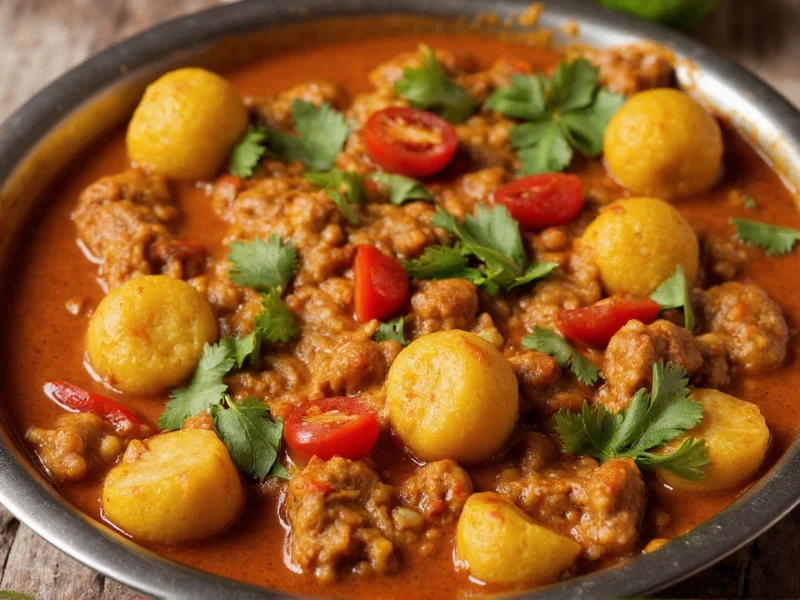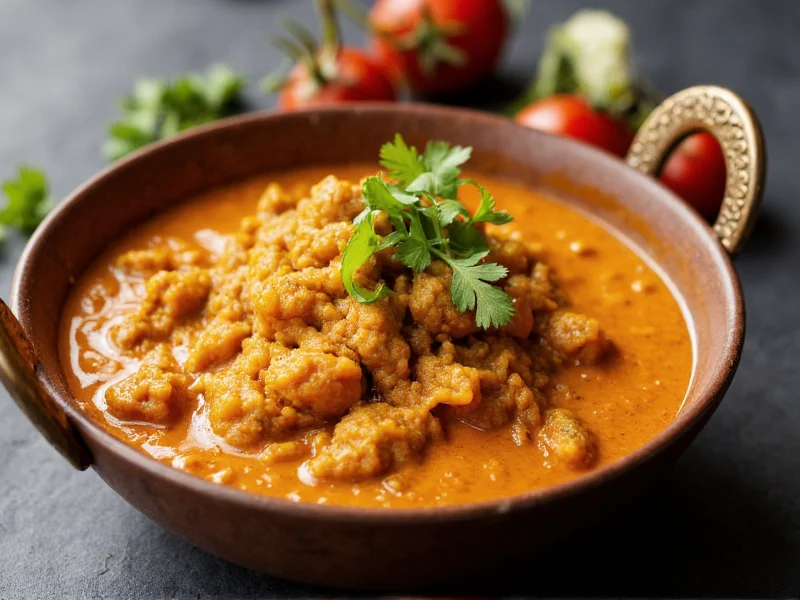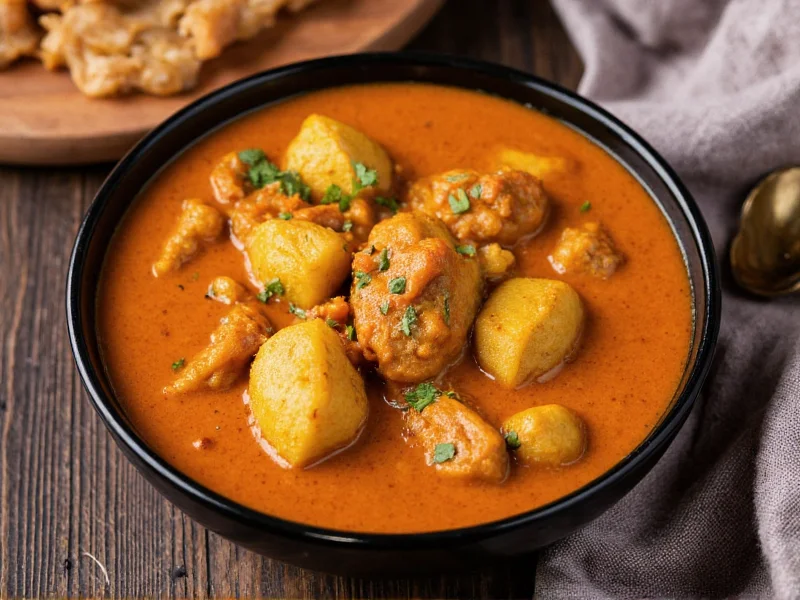Pain Point: The "Curry" Confusion Trap
Most home cooks grab "curry powder" assuming it's authentically Indian—only to face bland, one-dimensional results. This stems from a century-old misconception: "curry" isn't an Indian word. Indian cuisine has no umbrella term for these dishes; regional names like *sambar* (South India) or *roghan josh* (North India) are specific. The British colonial era (1700s) created "curry" as a catch-all label, leading to widespread confusion about ingredients and techniques. You’re not failing—you’re working with a flawed framework.
Cognitive Refresh: What Curry *Actually* Is
Archaeological evidence reveals spice blending (cumin, tamarind) in the Indus Valley Civilization (3300–1300 BCE), but "curry" as a concept emerged from cultural collision. Portuguese colonizers adopted Tamil *kari* in 1498, and the British later commercialized "curry powder" for export—a dry mix never used in traditional Indian kitchens. Modern culinary science confirms: authentic curries are region-defined dishes, not spice blends. As noted by Wikipedia, "chicken curry" is a misnomer; it’s actually "chicken in gravy" with local spices.

Curry paste (fresh, wet base) vs. powder (dried British invention)—key to authentic flavor.
Scenario Application: Regional Curry Guide
Understanding regional variations transforms your cooking. Japanese curry (a $1.5B market projected to hit $2.7B by 2032 per DataIntelo) uses roux blocks with apple and honey for mild sweetness. Thai curries rely on fresh pastes: red (spicy chilies), green (herbs), or yellow (turmeric). Southern Indian dishes like *sambar* feature coconut milk and tamarind, while Northern versions use garam masala and yogurt. Always start with the region’s base—never substitute powder for paste in Thai cooking.
| Type | Base Ingredients | Authentic Use Case | Shelf Life |
|---|---|---|---|
| Curry Paste | Fresh ginger, garlic, chilies, herbs | Thai/Indian stews (e.g., Panang Curry) | 2 weeks refrigerated |
| Curry Powder | Dried turmeric, cumin, coriander | British-influenced dishes (e.g., UK "curry") | 2 years sealed |
| Japanese Roux | Wheat flour, spices, sweeteners | Karē raisu (curry rice) | 1 year unopened |
Decision Boundary: When to Use (or Avoid) Curry Products
Use curry paste when authenticity matters: Thai green curry requires fresh cilantro and kaffir lime leaves for depth. Avoid curry powder in Indian or Southeast Asian dishes—it lacks volatile oils from fresh ingredients, creating flat flavors. For Japanese curry, roux blocks work perfectly due to their balanced sweetness. Critical rule: never use powder in place of paste for Thai cooking; it alters pH and texture. Also avoid pre-mixed "Indian" powders—they often contain fillers like flour. As LetsFoodie confirms, "curry powder is not authentic Indian."

Regional curry variations: Southern India (coconut-based) vs. Thailand (herb pastes).
Final Advice: Building Authentic Flavor
Start with fresh aromatics: sauté ginger and garlic before adding paste. For Indian dishes, toast whole spices (cumin seeds, mustard seeds) to release oils—never skip this step. If using Japanese roux, add it after simmering meat/veg to prevent clumping. Always balance acidity: a splash of lime juice elevates Thai curry, while tamarind cuts richness in Southern Indian *sambar*. Store homemade paste in ice cube trays for quick use. Remember: great curry hinges on layering, not shortcuts.
Common Misconceptions Exposed
Misconception 1: "Curry powder is Indian." Fact: It’s a British 1700s export invention; Indian cooks use fresh spice blends. Misconception 2: "All curries are spicy." Fact: Japanese curry is mild, while Southern Indian *sambar* focuses on tanginess. Misconception 3: "Curry = yellow from turmeric." Fact: Thai green curry gets color from herbs, not turmeric. As RiceSelect notes, regional ingredients define color and flavor—not a universal "curry" profile.

Proper storage: Curry paste in airtight containers extends freshness.
Everything You Need to Know
No. Curry powder is a British invention from the 1700s, created to replicate Indian flavors for export. Traditional Indian cooking uses fresh, region-specific spice blends—not pre-mixed powders. As documented by Wikipedia, Indian dishes have distinct names (e.g., *vindaloo*), with no single "curry" term.
Refrigerate homemade curry paste in an airtight container for up to 2 weeks. For longer storage, freeze in ice cube trays (1 cube = 1 serving), then transfer to bags. Avoid storing paste at room temperature—it spoils rapidly due to fresh ingredients like garlic and chilies. Commercial pastes last longer but check expiration dates.
Yes, when prepared traditionally. Curries with fresh pastes (e.g., Thai green curry) offer antioxidants from herbs and chilies. Avoid store-bought roux blocks high in sugar/sodium—opt for homemade versions with lean proteins and vegetables. Turmeric in many curries has anti-inflammatory properties, but balance with healthy fats like coconut milk for nutrient absorption.
Thai curry relies on fresh herb-based pastes (e.g., lemongrass, galangal) and coconut milk for creamy, aromatic profiles. Indian curry varies regionally: Southern dishes use tamarind and coconut for tanginess, while Northern versions feature garam masala and yogurt. Crucially, Thai curries are paste-driven, whereas Indian "curries" are distinct dishes with no universal spice mix.
Japanese curry evolved separately after British traders introduced roux-based sauces in the 1800s. It uses sweeteners like apple or honey, creating a thick, mild gravy (unlike spicy Thai or complex Indian versions). This adaptation—now a $1.5B market per DataIntelo—reflects local tastes, not Indian origins.










 浙公网安备
33010002000092号
浙公网安备
33010002000092号 浙B2-20120091-4
浙B2-20120091-4